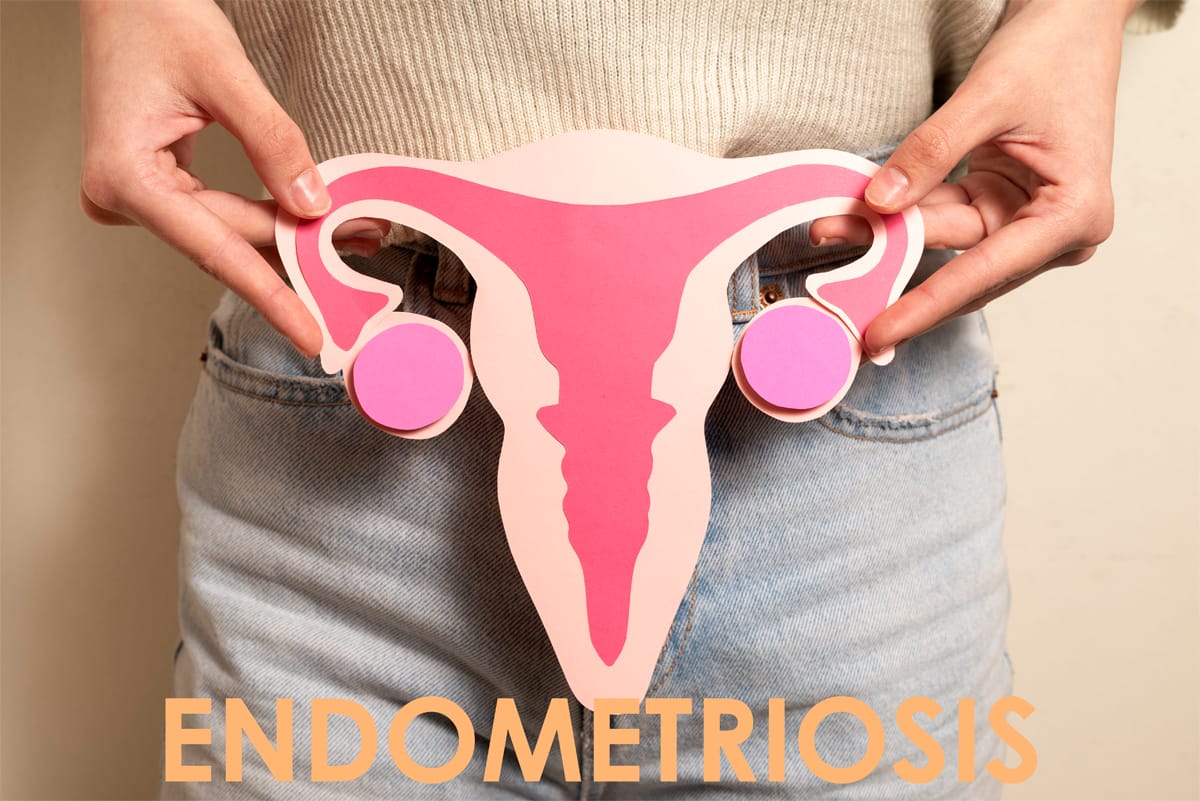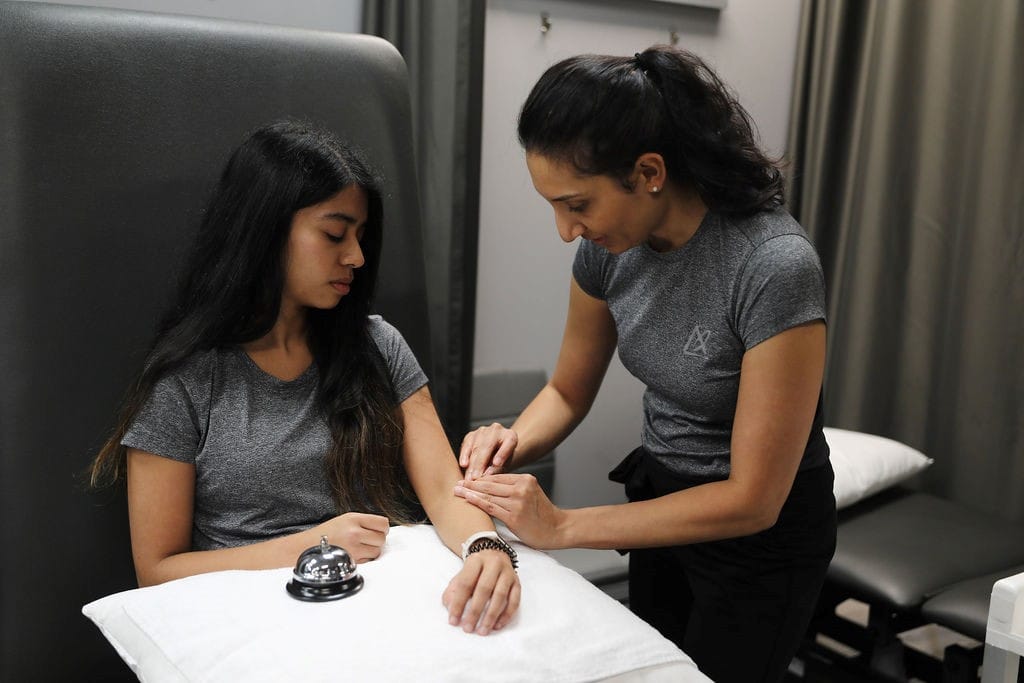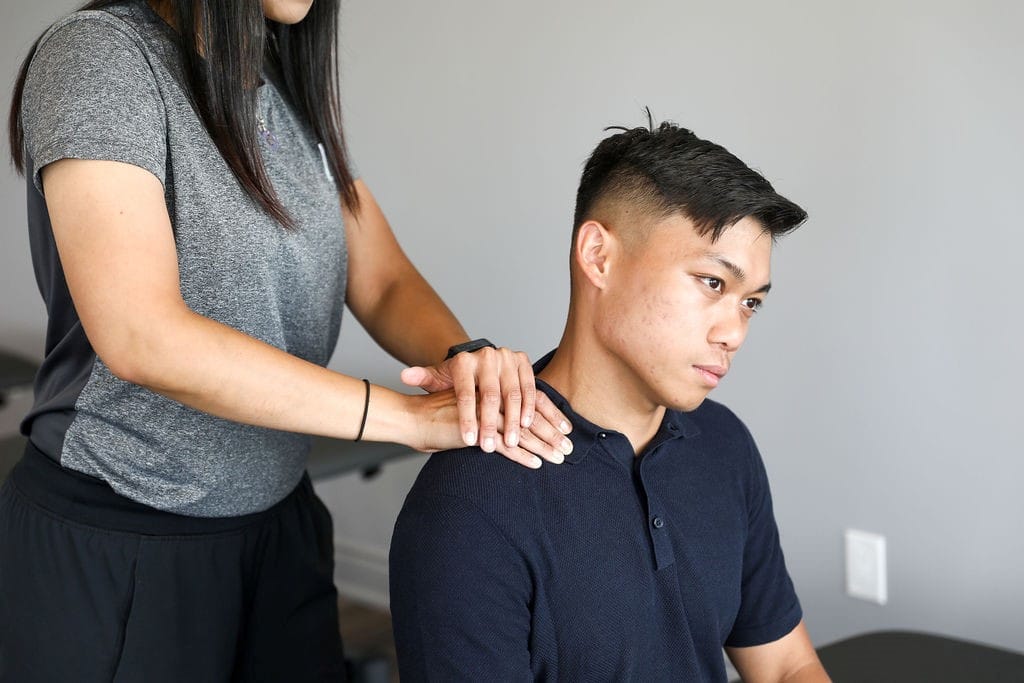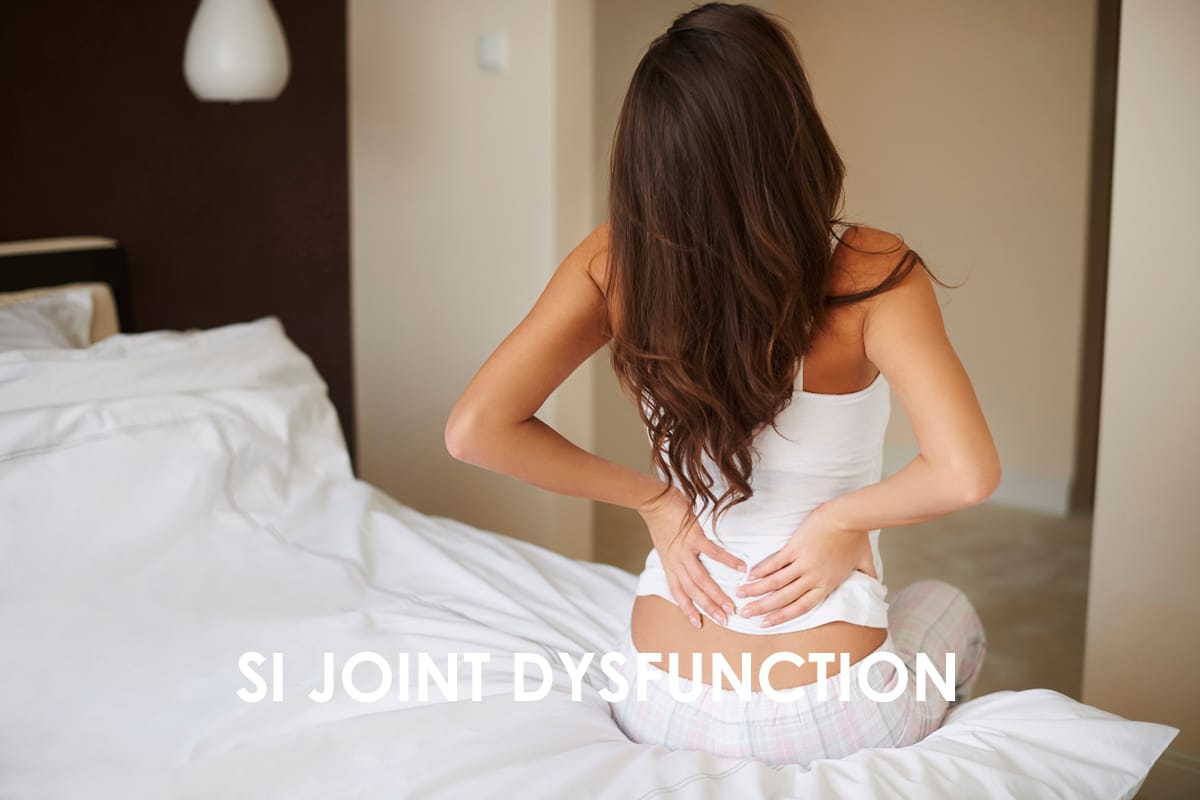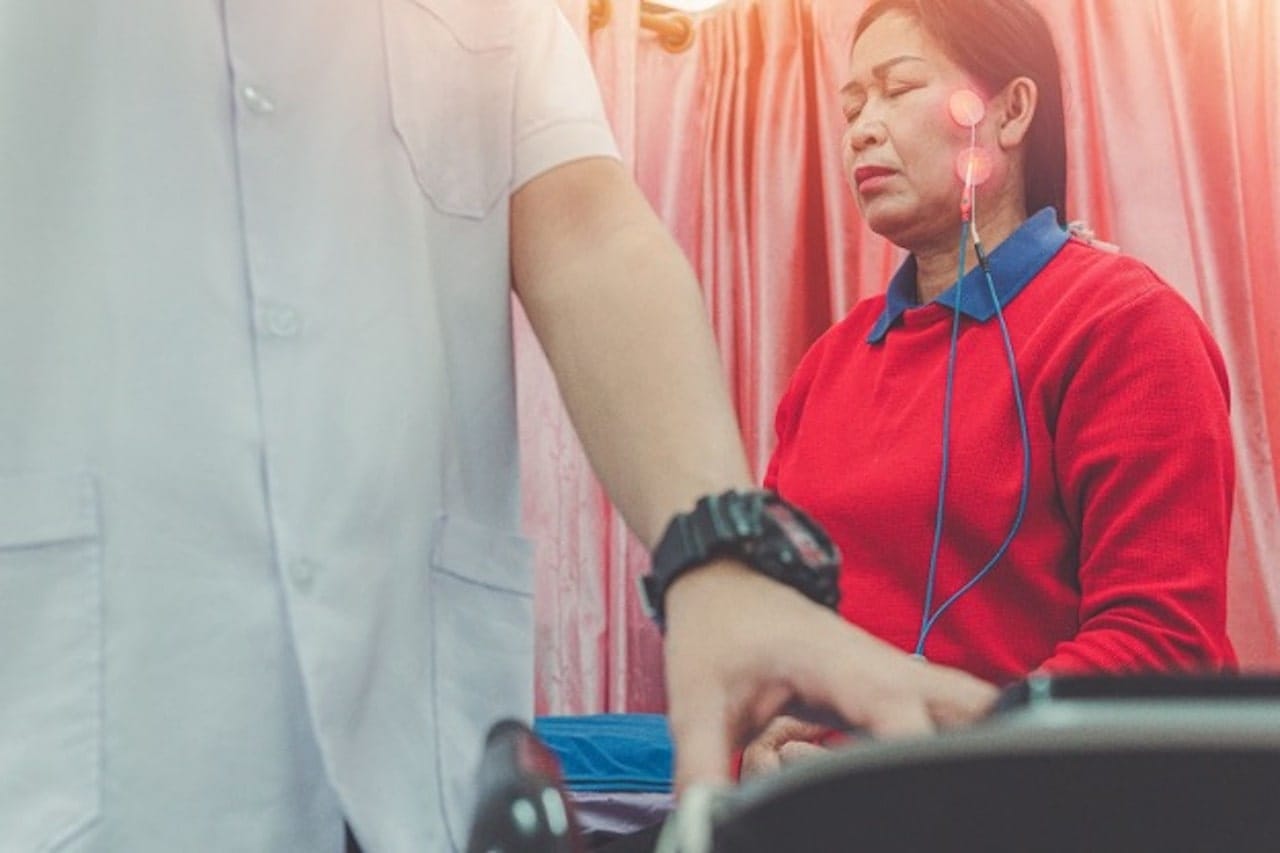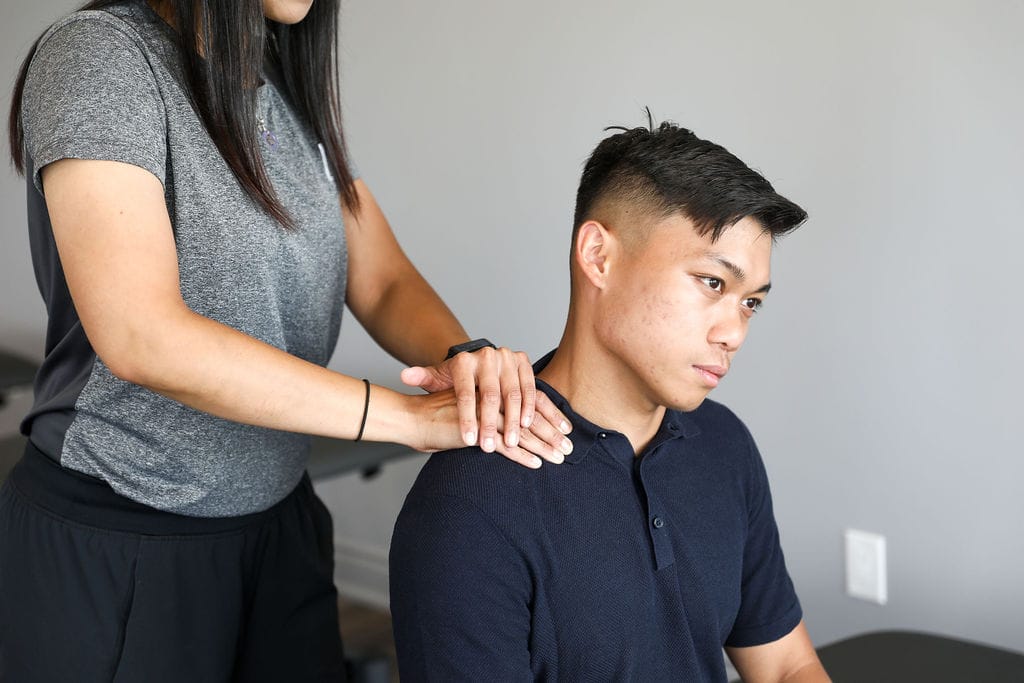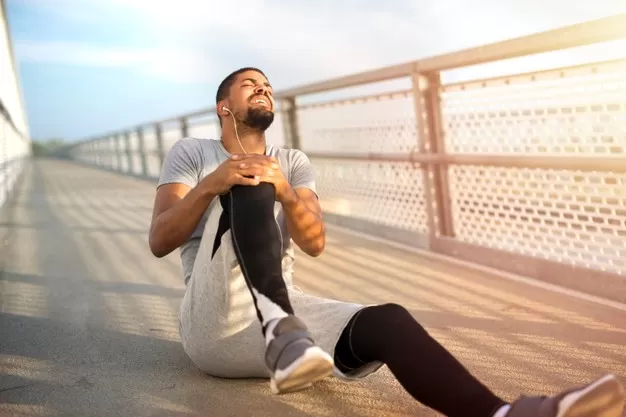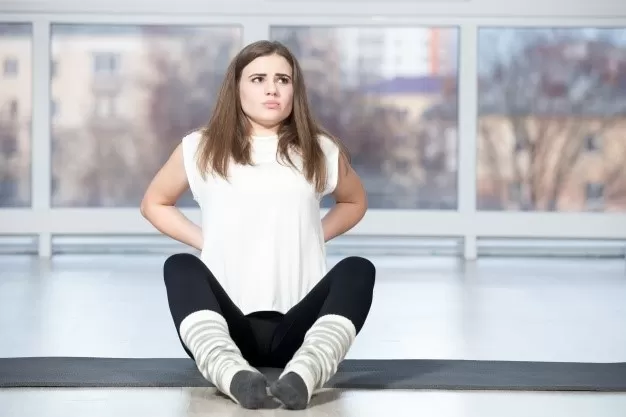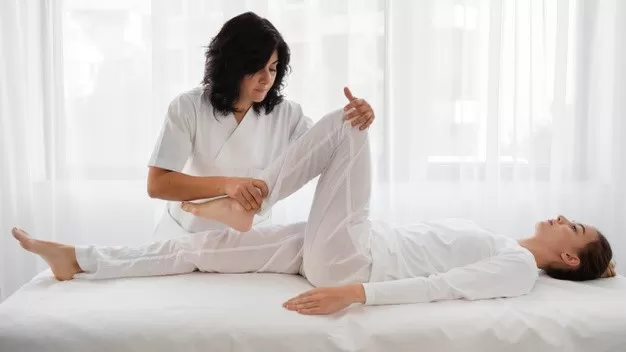By Roshni Ravi, Pelvic Health Physiotherapist
Endometriosis is a condition in which the tissue that lines the uterus grows outside of it, on other organs or structures in the pelvic cavity. This tissue, called endometrium, acts just like the lining of the uterus and thickens, breaks down, and bleeds with each menstrual cycle. However, because this tissue is located outside of the uterus, it has no way to exit the body, which can lead to pain, heavy bleeding, and the formation of scar tissue and adhesions. Endometriosis can also affect fertility.
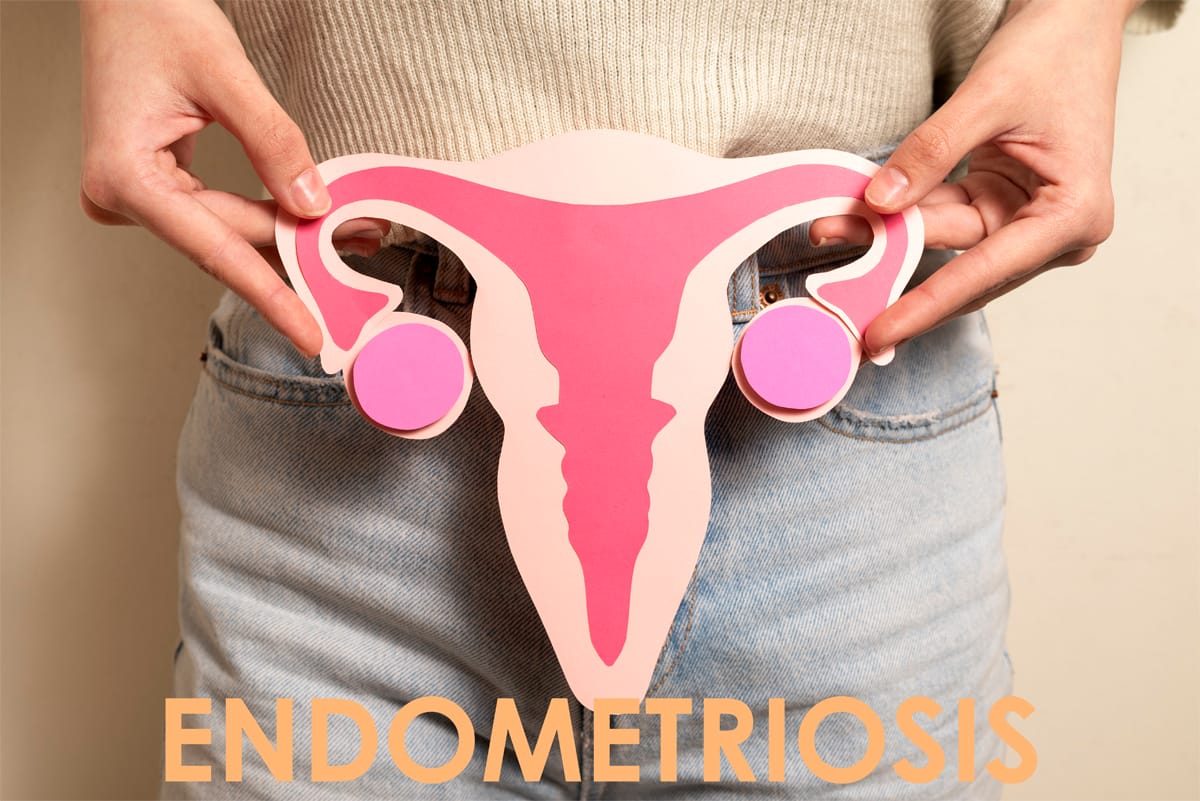
What is Endometriosis?
The cause of endometriosis is not well understood. It is usually treated with hormones, pain medication, and surgery. The average delay from symptom onset to diagnosis is 5.4 years in Canada, because of the uncertain etiology. Patients wait for an average of 3.1 years from the onset of symptoms to seeking consultation with their physician.
Some causes for endometriosis may possibly include:
- Retrograde menstruation: some of the endometrial tissue flows backwards through the Fallopian tubes and into the pelvic cavity, and attaches to other organs and structures.
- Embryonic cell growth: develops from cells in the embryonic stage that grow into endometrial tissue instead of into other tissue types
- Immune system dysfunction: some women may have a dysfunction in their immune system that allows endometrial tissue to grow outside the uterus
- Hormonal factors: hormonal imbalances contribute to the development of endometriosis
- Genetic factors
So what can I do about it?
Medical treatment includes surgery, hormonal therapy and medicated pain management. Other alternatives are acupuncture, herbal supplements and pelvic floor physiotherapy.
Pelvic floor physiotherapy can be beneficial for endometriosis. It can help alleviate pain, improve mobility and flexibility as well as reduce the formation of adhesions and scar tissue. Treatment targets the muscles and soft tissue in the pelvic area through techniques such as manual therapy, trigger point release and myofascial release to relax the muscles and thereby alleviate pain. There are a variety of pelvic floor exercises that can also contribute towards alleviating pain and improving symptoms.
Unsure of what to do next but experiencing these symptoms? Consult a pelvic health physiotherapist to see if pelvic floor physiotherapy is right for you. Our Mississauga Pelvic Health Physiotherapists are experienced and qualified to help you through this diagnosis. Book an appointment here.
Disclaimer: This article is for informational purposes only and should not be used for self-diagnosis.
“Recognizing the early signs of endometriosis is crucial for effective management and care. Triangle Physiotherapy offers expert pelvic health services across the GTA, including Physiotherapy in Etobicoke, Oakville, North York, Toronto, Lawrence Park, Queens Quay, Erin Mills, Mississauga, and Liberty Village. Our experienced physiotherapists provide personalized treatment plans to help you manage endometriosis symptoms and improve your quality of life.”
Golfer’s elbow and Tennis Elbow are both tendonitis. The difference is Golfer’s elbow occurs on the inner side of the elbow while Tennis Elbow occurs on the outer side of the elbow. Tennis elbow, also known as lateral epicondylitis is the inflammation of the tendon that connects the forearm muscles to a bony prominence on the outside of the elbow known as the lateral epicondyle. Golfer’s elbow, on the other hand, is known as medial epicondylitis because the inflammation is on the tendons which are attached to the medial epicondyle.
How Is Tennis Elbow Diagnosed?
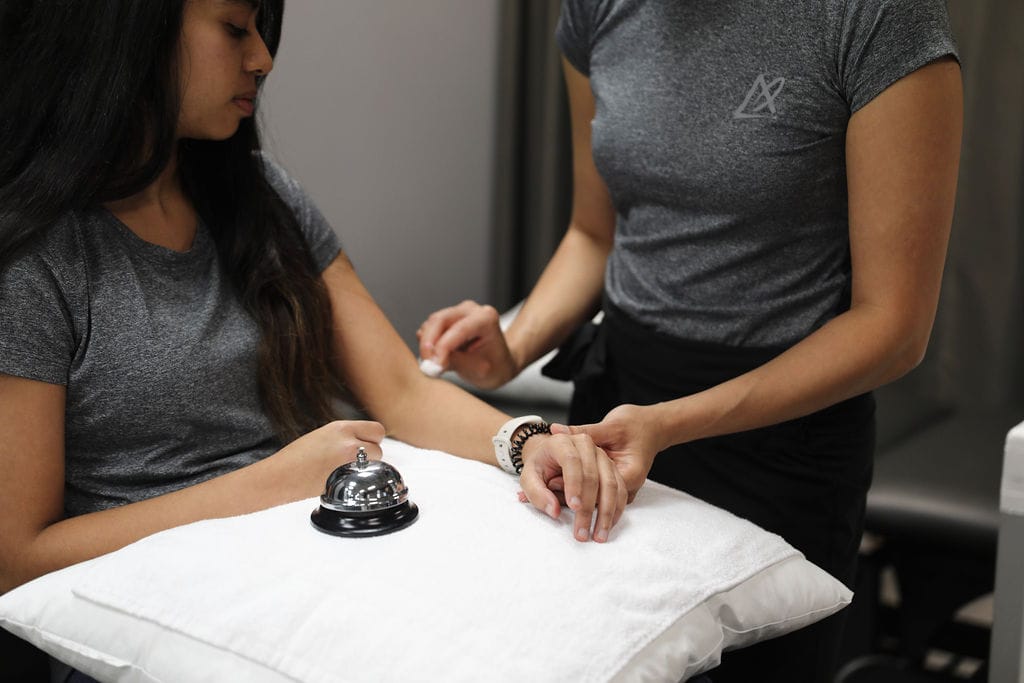
Your physiotherapist will evaluate tennis elbow by reviewing your medical history, performing and reviewing your medical history. A doctor may recommend a X-ray, EMG or MRI to assess the severity of the condition.
A physiotherapist can also conduct a detailed assessment of your elbow and the surrounding structures in order to create a personalized treatment plan for you. Special tests such as Cozen’s and Mills Test can also be used to diagnose Tennis elbow.
What are the complications of a Tennis Elbow?
Complications of Tennis elbow or lateral epicondylitis may include tendon rupture, recurrence of the injury, chronic pain, nerve entrapment in the forearm, and failure to improve despite both nonsurgical and no surgical treatment.
Cause of Tennis Elbow and Treatment
What causes a Tennis elbow and who might get a Tennis Elbow?
Some causes of Tennis elbow are:
- weak wrist muscles,
- use of tennis racquets that are too short,
- weakened muscles of the shoulder and wrist,
- repetitive hand motions,
- poor tennis technique,
- frequent use of hand tools,
- lifting heavy objects, and
- excessive gripping activities.
Despite the name, Tennis elbow is not only for tennis players although they tend to often develop tennis elbow because of the repetitive muscle use and gripping activities the sport entails. People whose professions involve repetitive use of the wrist and forearm are more likely to develop lateral epicondylitis.
Some professions, such as painters, dentists, plumbers, carpenters, musicians, and cooks, may develop Tennis elbow which can also be caused by the repetitive use of a keyboard and mouse.
What Is The Best Treatment For Tennis Elbows?
The majority of tennis elbow cases can be successfully treated without surgical intervention. How a tennis elbow is treated may vary depending on which medical professional you choose to see.
Research has shown that physiotherapy is the most effective treatment of the Tennis elbow.
Tennis Elbow Physiotherapy Treatment
- Therapeutic Ultrasound
- Acupuncture
- Tennis elbow treatment exercises
- Deep tissue massage
- Shockwave therapy
- Taping or brace
- TENS
- Modified activities
- Hot and cold packs
How does massage help heal Tennis elbow?
Tennis Elbow Massage Treatment helps improve circulation, stimulate collagen production, and increases mobility in the affected area.
What Can I Do To Prevent Tennis Elbow?
There are many ways to prevent Tennis elbow such as:
- Stretching regularly.
- Strengthening of the forearm muscles.
- Modifying activities that contribute to pain.
- Warming up before playing tennis and other sports and ensuring the stability of the wrist.
What are some Tennis elbow exercises which can be done at home to help prevent recurrence?
Specific Tennis elbow exercises to strengthen as well as stretch the muscles that are attached to the injured tendon will certainly help speed up healing which then increases its resistance to repetitive stress… Some of these Tennis elbow treatment exercises are Stress ball squeeze, finger stretch, wrist extension, flexion stretch, forearm extension, flexion, supination, and pronation strengthening exercises.
Are there any natural Tennis elbow treatments I can do at home while I wait to see a physiotherapist?
Resting and avoiding activities that aggravate your pain can be beneficial. You may also try to apply an ice pack for 15 mins three times a day.
What is the best treatment for chronic Tennis elbow?
The most effective treatment for chronic tennis elbow has always been physiotherapy and exercise. If physiotherapy does not fully heal it, however, steroid injections, braces, and surgery may also help.
Our physiotherapists in Toronto, Midtown Toronto, Mississauga, North York and Oakville can help you with tennis elbow. Book your appointment here.
“Effectively treating tennis elbow and golfer’s elbow requires specialized physiotherapy care. Triangle Physiotherapy offers expert services across the GTA, including Physiotherapy in Etobicoke, Oakville, North York, Toronto, Lawrence Park, Queens Quay, Erin Mills, Mississauga, and Liberty Village. Our experienced physiotherapists can help you recover from elbow pain and regain strength with personalized treatment plans.”
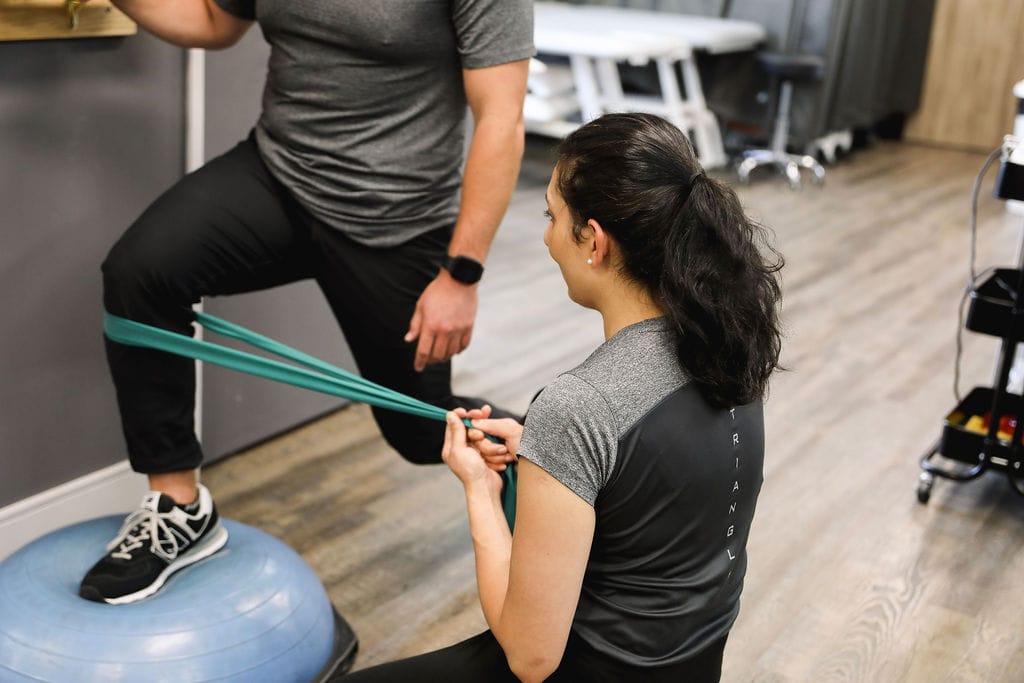
People often ask us if physiotherapy is the same as physical therapy, and the answer is yes. In fact, the term physiotherapy and physical therapy can almost be used interchangeably.
Are there any differences and similarities between physical therapy and physiotherapy?
In general, there are no differences between physical therapy and physiotherapy. The term physiotherapy is used for those based in Australia, Canada, or Ireland while the term physical therapy is used by those based primarily in the United States.
Some believe that there is a slight difference when it comes to its approach. Some would say physiotherapy uses more hands on approach and manual therapy while physical therapy is more exercise based in its approach.
Ultimately, it shouldn’t matter which term is used as long as you see someone who is registered with the College of Physiotherapists of Ontario. Find a professional who will provide you with the proper treatment and care to help you with your condition and improve the quality of your life.
At Physiotherapy Oakville, all our therapists are registered with the College of Physiotherapists of Ontario, ensuring you receive the highest standard of care. By joining Physiotherapy Oakville, you can trust that you are in capable hands, dedicated to helping you achieve optimal health and well-being. Connect with our expert team today to start your journey towards a better quality of life.
Similarities:
- Both Physiotherapy and Physical Therapy aim to help patients recover from injuries and conditions that affect their mobility and independence.
- Both professions use a variety of manual therapy techniques, exercises, and other treatments to help patients regain strength, flexibility, and range of motion.
- Both Physiotherapy and Physical Therapy are concerned with improving the quality of life for patients and helping them return to their daily activities as soon as possible.
Differences:
- Geographical Location: Physiotherapy is a term used primarily in the UK, Europe, and other parts of the world, while Physical Therapy is used primarily in the United States.
- Education: Generally, the education is no different for both titles.
- Scope of Practice: This may differ based on the country of practice but in North America the socpe remains the same.
- Specializations: Physiotherapists have the option to specialize in specific areas of practice. They can specialize in sports, women’s health, cancer rehab and pediatrics. Physical Therapists also have the option to specialize, but the options may differ depending on the country they practice in.
Our More Locations
Physiotherapy Etobicoke | Physiotherapy Oakville | Physiotherapy North York | Physiotherapy Toronto | Physiotherapy Lawrence Park | Physiotherapy Mississauga | Physiotherapy Queens Quay | Physiotherapy Mississauga Erin Mills | Physiotherapy Liberty Village
Book your appointment to see a physiotherapist here.
“While physiotherapy and physical therapy are often used interchangeably, both involve similar approaches to improving movement and reducing pain. Triangle Physiotherapy offers expert services across the GTA, including Physiotherapy in Etobicoke, Oakville, North York, Toronto, Lawrence Park, Queens Quay, Erin Mills, Mississauga, and Liberty Village. Our experienced team is here to provide personalized care tailored to your specific needs, whether you refer to it as physiotherapy or physical therapy.”
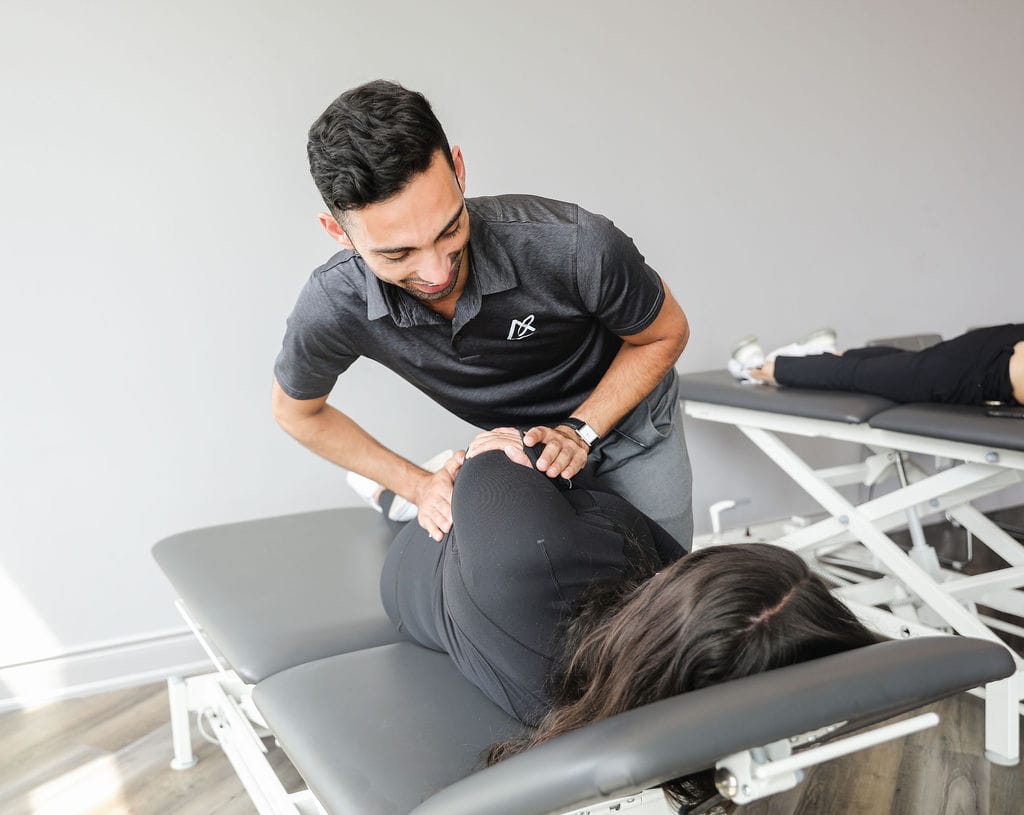
| Definition/Layman’s terms for the condition | Sacroiliac joint dysfunction is a term used to describe the pain derived from the joint. It can be caused in issues with movement and alignment. It usually presents as low back pain. |
| Cause/MOI | SI joint dysfunction can be present during pregnancy when there are many changes to the body (physically, hormonally, etc). It can also be present after trauma to the area by landing on your back or landing with a straight leg causing forces to travel up the leg. |
| Common symptoms | Pain is usually localized over the buttock area where the SIJ is located. It may be a sharp or shooting pain that can refer down the back of the leg, but usually not past the knee. Most people will complain of pain when sitting down, climbing stairs |
| How is it diagnosed clinically? Diagnostically | Clinical diagnosis is based on a combination of subjective history and clinical cluster of objective tests. Subjective history may include pregnancy, direct trauma to the area, landing on a straight leg, pain localized to the buttock area or referring down the leg but not past the knee. Objective tests include a series of maneuvers that may provoke the pain or may show the clinician changes in motor control around the SIJ. |
| Treatment options? | Treatment options usually are conservative in nature and thus physiotherapy is a mainstay in addressing SIJ dysfunction. Pain medications, corticosteroids, taping and braces may also be implemented to help with daily functioning. |
| How physiotherapy can help? | Physiotherapy can help by reducing pain and inflammation, strengthening your core and mobilizing your SIJ. |
| Typical physiotherapy treatment approach-manual therapy, modalities, exercise, etc | Physiotherapy treatment may consist of manual therapy, exercises, education, and modalities. Manual therapy may consist of low back mobilisations, SIJ mobilisations and manipulations to help with pain relief.Exercises may consist of core strengthening and lower extremity strengthening, all in an effort to help provide stability to the area and increase pain free mobility. Contact us to book an appointment for a physiotherapy assessment. |
| Other treatment options | Other treatment options include braces, taping, corticosteroids. |
| Prognosis | SIJ dysfunction has a good prognosis and pregnancy-related SIJ dysfunction will usually resolves within 12 months post-partum. |
| Consequences of not getting it treated/long term effects | Ongoing pain, trouble with sitting, walking/running, trouble with daily activities that involve your lower extremities. |
| Braces that can help | Pelvic belt, SI joint belt. We offer the Sacroloc. |
Click HERE to book an appointment with a physiotherapist or chiropractor at one of our eight locations.
- Physiotherapy Etobicoke – Triangle Physiotherapy Etobicoke
- Oakville Physiotherapy Clinic – Triangle Physiotherapy Oakville
- Physiotherapy North York – Triangle Physiotherapy North York
- Mississauga Physiotherapy Clinics – Triangle Physiotherapy Mississauga
- Downtown Physiotherapy Clinics – Triangle Physiotherapy King West
- Uptown Physiotherapy Clinics – Triangle Physiotherapy Lawrence Park
- Physiotherapy Clinic Downtown Toronto – Triangle Physiotherapy Queens Quay
- Physiotherapy Clinics Mississauga – Triangle Physiotherapy Erin Mills
“Effectively managing SI joint dysfunction requires targeted physiotherapy and expert care. Triangle Physiotherapy offers specialized services across the GTA, including Physiotherapy in Etobicoke, Oakville, North York, Toronto, Lawrence Park, Queens Quay, Erin Mills, Mississauga, and Liberty Village. Our experienced physiotherapists can help you alleviate pain and restore proper function through personalized treatment plans.”
What Is Bell’s Palsy?
Bell’s palsy, also known as idiopathic facial palsy, is a sudden weakness or paralysis on one side of the face. It is caused by inflammation on the facial nerve, which is usually temporary.
What are the symptoms of Bell’s palsy?
- The most common symptom of Bell’s palsy is the sudden weakness or paralysis on one side of your face causing it to droop.
- Drooling.
- Eye issues such as excessive tearing or a dry eye.
- Altered taste.
- difficulty eating and drinking
- Sensitivity to sound.
- Pain in or behind your ear.
- Numbness in the affected side of your face.
- Dry mouth
What are the causes of Bell’s palsy and what Is the main cause of Bell’s palsy ?
Bell’s palsy is facial nerve paralysis of unknown cause but it’s often related to having a viral infection. Viruses that have been linked to Bell’s palsy include viruses that cause:
Some viruses which have been believed to be common Bell’s palsy causes are:
- Cold sores and genital herpes (herpes simplex)
- Chickenpox and shingles (herpes zoster)
- Mumps
- Flu
- Infectious mononucleosis (Epstein-Barr)
Other conditions that may cause Bell palsy are:
- HIV infection
- Lyme disease
- Middle ear infection
- Sarcoidosis
What is the best cure for Bell’s palsy and what happens If Bell’s palsy Is untreated?
Most people with Bell’s palsy fully recover even without treatment. But some medications or physiotherapy can help speed up Bell’s palsy recovery. Some studies showed that about one third of untreated Bell’s Palsy patients suffered from long term effects such as facial spasms and disfigurement, and chronic pain.
The best Bell’s palsy treatment will vary between individuals but most will be prescribed corticosteroids to reduce the facial nerve inflammation of the facial nerves. Some patients may be prescribed antiviral drugs like acyclovir to speed up the recovery process.
What Is The Best Treatment For Bell’S Palsy?
Bell’s palsy improves without treatment. Still, your healthcare provider may recommend one or more of these therapies for symptom relief and a faster recovery:
Another effective Bell’s palsy treatment is eye care which is crucial in protecting the eyes from injuries and irritants. If your eye does not close completely, the use of glasses or goggles is beneficial. An eye patch can be used at night.
Decompression surgery to ease nerve pressure eases pressure but it is rarely done because it may cause permanent nerve damage and loss of hearing.
Another beneficial treatment for Bell’s Palsy is Physiotherapy.
A registered physiotherapist can assist with providing education and support during recovery in order to reduce secondary complications.
- Electrical muscle stimulation is used to stimulate the nerve fibers in order to help maintain some of the strength, which then promotes faster recovery,
- Daily exercise regimen
- Soft tissue massage can be applied to the head and face to help with aches and help stimulate repair of innervation for the facial muscles.
Recovery from Bell’s Palsy
In general, people whose paralysis is less severe tend to start to improve with or without treatment after a few weeks, with complete recovery of facial function within six months. If symptoms start to improve within the first 21 days, chances are there will be complete recovery with no residual facial muscle weakness.
At Physiotherapy Oakville, we understand the importance of early intervention and personalized care in facilitating recovery. Scientific studies have shown that timely physiotherapy can enhance the recovery process for facial paralysis, minimizing residual muscle weakness and improving overall outcomes. By joining Physiotherapy Oakville, you gain access to expert physiotherapists who provide evidence-based treatments tailored to your specific condition, supporting a faster and more complete recovery.
What are the complications Of Bell’s palsy?
Some of the complications of Bell’s palsy are:
- Irregular regrowth of nerve fibers and irreversible damage to your facial nerve which can result in synkinesis. Synkinesis is a condition in which moving one part of your face causes involuntary contraction of another.
- Excessive eye dryness on your affected side, which can lead to eye infections or even vision loss.
- Some people don’t fully recover and are left with long term facial paralysis and drooping.
Bell’s Palsy versus Stroke
Cause
The cause of Bell’s palsy is uncertain but some viruses like herpes zoster, herpes simplex, and mumps have been believed to be connected to Bell’s palsy.
Stroke is caused by high blood pressure, heart disease, high cholesterol, previous stroke.
Diagnosis
Bell’s palsy does not require any specific testing. Your doctor may ask you to perform specific facial movements such as eyebrow raising, frowning, smiling, and eyes closing. At times, EMG or MRI may be conducted to rule out stroke.
Diagnosing strokes is dependent on several factors. Some imaging scans are used to assess the brain and its blood supply.
Treatment
Treatment of Bell’s palsy are corticosteroids and antiviral medications, pain medications, and physiotherapy.
There is a more complex approach in treating stroke and its treatment is dependent on the type of stroke.
Our More Locations
Physiotherapy Etobicoke | Physiotherapy Oakville | Physiotherapy North York | Physiotherapy Toronto | Physiotherapy Lawrence Park | Physiotherapy Mississauga | Physiotherapy Queens Quay | Physiotherapy Mississauga Erin Mills | Physiotherapy Liberty Village
Click HERE to book an appointment with a physiotherapist at one of our eight locations.
- Physiotherapy Etobicoke – Triangle Physiotherapy Etobicoke
- Oakville Physiotherapy Clinic – Triangle Physiotherapy Oakville
- Physiotherapy North York – Triangle Physiotherapy North York
- Mississauga Physiotherapy Clinics – Triangle Physiotherapy Mississauga
- Downtown Physiotherapy Clinics – Triangle Physiotherapy King West
- Uptown Physiotherapy Clinics – Triangle Physiotherapy Lawrence Park
- Physiotherapy Clinic Downtown Toronto – Triangle Physiotherapy Queens Quay
- Physiotherapy Clinics Mississauga – Triangle Physiotherapy Erin Mills
“Addressing Bell’s Palsy and related back pain requires a comprehensive approach, including specialized stretches and physiotherapy. Triangle Physiotherapy offers expert services across the GTA, including Physiotherapy in Etobicoke, Oakville, North York, Toronto, Lawrence Park, Queens Quay, Erin Mills, Mississauga, and Liberty Village. Our experienced physiotherapists can help you manage symptoms and improve your quality of life through personalized treatment plans.”
Should I go to a physiotherapist after a car accident?
If you met with a car accident and having problems related to the mobility of your body or if it causes obstacles to function properly and efficiently then you should definitely go for Physical Therapy.
Physical therapists are musculoskeletal experts and may help cure the underlying musculoskeletal injuries that may have occurred after meeting with a car accident. At Triangle Physiotherapy, our Physical Therapists will assure a one-to-one session where they will conduct an extensive whole-body analysis with a target of developing a customized treatment and detailed physical therapy programs which suit best to your condition and individual needs.
What can a physiotherapist do to help after a car accident?
The goal of physical therapy is to help you recover physically and strengthen damaged muscles and tissues.
A Few physical therapy exercise programs would include:
- Manual therapy to mobilize joints, decrease scar tissue, reduce inflammation and enhance healing of tissue.
- Custom exercises to address types of pain like neck and shoulder pain, back pain, spine dysfunction, or weakness.
- Postural training to resolve pain in the neck, shoulders, and back.
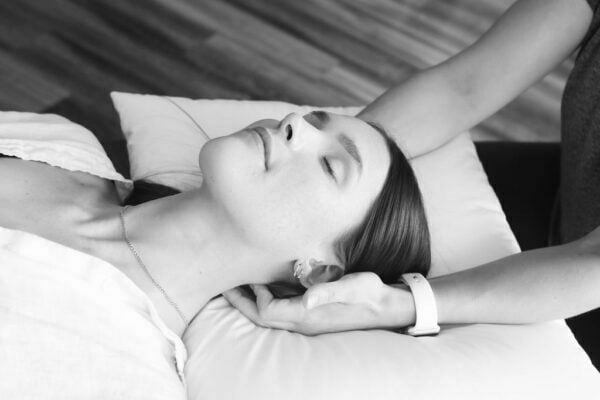
COMMON TYPES OF INJURIES
The list of injuries if you meet with a car accident are as follows:
- Whiplash
- Headaches
- Back Pain
- Neck Pain
- Shoulder Pain
- Knee Pain
What are the common symptoms related to WHIPLASH?
Common symptoms related to whiplash include:
- Stiffness to neck, arms, upper back, and the face.
- Numbness into arms, neck, and upper back.
- Headache, dizziness, nausea.
- Feelings of general weakness.
- Altered and disturbed sleeping habits and patterns.
- Difficulty with concentration.
Is it important to get physiotherapy as soon as possible after a car accident?
Although you may feel the immediate onset of pain or symptoms of injury, these symptoms may bring forth pain and mobility problems over the long haul.
Suppose if you met with a car accident, one may wonder that why is it necessary to get treated with Physiotherapy after an accident? If you’re considering Physiotherapy after a car accident, there are many reasons that you may want to begin or continue with the treatment.
The doctor will recommend that you receive Physiotherapy and you will realize the benefit of rehabilitation after a car accident. You may realize on your own that you can benefit from rehabilitative treatment.
Here’s why you should start Physical Therapy after a car accident:
- Physical Therapy After a Car Accident Can Help You Recover Faster
Going through Physical Therapy after a car accident can help you speed up your recovery time. It can help the body recover its lost strength so that you can reduce the amount of time it takes to improve and fully recover from the injuries caused by car accidents. Time and again patients don’t realize how bad their car accident injuries are until they return to their day-to-day activities.
If you are looking for a physiotherapist to help you with your injuries, our rehabilitation facility is one of the best physiotherapy clinics:
- Physical Therapy Can Help You Recover Better and Prevent Long-term damage
In order to help you recover faster, Physical Therapy programs ensure a better outcome after taking good care and following Physical Therapy exercises. It can also help you or prevent the long-term effects of your injuries like chronic pain and migraines. Unfortunately, car crashes can cause nagging damage if the patient’s injuries are not addressed right away. If you begin physical therapy immediately after your car accident, it’s more expedient to live a pain-free life for years.
- Boosting Mental Health and Improving Quality of Life
Some issues can create a problem after years of being a victim of a car accident and this can seriously affect the quality of life of a person. Physical therapy relieves these issues before becoming a serious health concern for an individual.
- Avoiding Surgery
Every so often injuries caused by car accidents can even require surgery, most injuries or a type of wear and tear but a few injuries, if left rampant, can lead to surgery and costly hospital bills. It is always advised to immediately check-up with a professional for the treatment. This will help with any claims you may wish to make later on. Physical therapy treatment is a much more cost-effective solution to recovery.
There are multiple benefits of physiotherapy and that’s why people are opting for this line of treatment for recovery and overall well-being.
Steps to take after a car accident and a few advantages of Physiotherapy:
- The Type of Injury
Car accident injuries can affect your recovery time and the time period that takes to complete your treatment. One of the most common car accident injuries is whiplash. A whiplash injury occurs when the force of the accident causes your head and neck to jerk violently forward and backward. This can cause the muscles and tendons in your neck to stretch outside their normal range of motion. Whiplash can also affect the spinal column in your neck and disc injuries can be serious. Depends on the intensity of the whiplash, it can take a few months to recover and get the accurate motion of the neck as it was before.
2. The Severity of the Accident
It is more likely to sustain a moderate to severe injury in a more serious car accident, even the smallest of the injury. A more severe accident can cause consequential harm to your body even if you are taking all precautions of car safety like wearing the seatbelt and the airbag deploys. More serious injuries like a dislocated knee or a broken foot can impact your daily routines.
3. Any Previous Injuries
A previous injury can leave behind scar tissue, that impacts how your body heals the new injury. Physiotherapy often takes longer if you have previous injuries, especially if they occur in the same area.
Few factors that effect are:
- The severity of the injury
- Location of the injury
- Patient’s current state of health
- Patient’s treatment goals
- Rate of progress
How can Physiotherapy help if you’ve met with a car accident?
Physiotherapy helps reduce the pain and discomfort usually felt after a car accident injury. A lack of physical activity when recovering from an injury can actually cause stiffness, which can lead to more discomfort when trying to return to your daily activities, so you should always try to keep your body in motion.
“Recovering from a car accident requires targeted physiotherapy to restore mobility and reduce pain. Triangle Physiotherapy offers expert care across the GTA, including Physiotherapy in Etobicoke, Oakville, North York, Toronto, Lawrence Park, Queens Quay, Erin Mills, Mississauga, and Liberty Village. Our experienced team provides personalized rehabilitation plans to help you recover effectively and regain your quality of life.”
Physiotherapy and Physiology both have many similarities, but they have a set of differences too.

What is Physiotherapy and what does a physical therapist do?
Physiotherapy or Physical Therapy is a medical treatment where patients face problems of mobility, function, and well-being; pain in specific locations of a body especially body parts that are in constant motion like bones, tissues, etc. it helps through physical rehabilitation, injury prevention. Tests are carried out to determine the limitations of the patient which further helps in formulating the set of exercises that will aid in restoring movement.
Physiotherapist duties are:
- Detect the patient’s medical issues in order to help the patient recover from illness, accident, or injury.
- Provide a clear and well-organized exercise program with clearly defined goals and milestone targets.
- Set objectives for patient progress and document it.
- Set up an exercise session as a part of the treatment, and maintain detailed reports of future exercise planning.
- Prepare an evaluation document, and instruct patients to use exercise equipment such as walkers.
- Inform the patient about the benefits of exercise to mentally motivate them.
- Follow the doctor’s directions to prescribe exercises meanwhile assisting doctors and nurses if required.
What is Physiology and what does a Physiologist do?
Physiology is a medical treatment and a detailed study of the anatomy of the body’s organs and their cells, this treatment aims at preventing chronic diseases and providing physical health benefits suffering from injuries. It treats diseases like obesity, cardiovascular diseases, and diabetes.
Physiologist responsibilities are:
- Monitor and record patients’ health and medical performance while exercising and under medication, and make thorough observations over time to deliver results to the physician.
- Use medical equipment and machinery when going through the exercise of the lungs and heart.
- Performing tests to evaluate physical and mental stress levels.
- Simultaneously work with physiotherapists to evaluate results.
- Create a plan of types of exercises to be followed.
- Assess the treatment’s effectiveness to fetch the right results.
Differences between Physiologist and Physiotherapist
- Physiologists and exercise physiologist degree requirements both undertake 4 years of university training, both theoretical and practical, studying subjects such as anatomy, physiology, and biomechanics, etc. Both are recognized by Medicare, TAC, WorkCover, and private health funds, and require yearly professional development.
- Physiologists provide prescriptions and teach trigger point therapy and self-massage techniques, using exercise equipment such as foam rollers and trigger point balls. Physiotherapists, on the other hand, can deliver soft tissue mobilization through massage, acupuncture, dry needling, and ultrasounds, and guide you through self-massage techniques as well.
- Physiotherapists evaluate the injury diagnosis and prognosis, whereas Physiologists receive the injury diagnosis and deliver the rehabilitation prognosis.
- Physiologists specialize in providing lifestyle modification techniques to support those with a wide range of chronic health conditions to promote improved health and wellness and decrease risk. Physiotherapists will overall specialize in the acute phase of an injury, and can often also deliver long-term rehabilitation and health monitoring.
- Exercise physiology accreditation and the conditions they work with:
- Cancer treatment recovery
- Chronic pain and fatigue
- Managing osteoarthritis pain
- Osteoporosis and arthritis
- Diabetes
- Metabolic Syndrome
- Mental health
- Musculoskeletal
- Neurological (Parkinson’s disease, multiple sclerosis, cerebral palsy)
- Obesity
- Pulmonary
- Cardiovascular
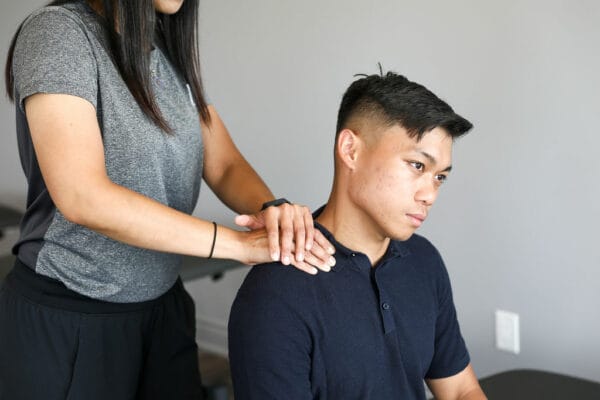
6. Conditions physical therapists work with:
- Mobility and balance concerns/falls
- Back or other spinal joint pain
- Sports injuries
- Chronic pain
- Post-surgery rehabilitation
- Cardiorespiratory issues
- Neurological (injuries) conditions – for example, stroke
- Parkinson’s disease
- Multiple Sclerosis
- Arthritis- for example osteoarthritis/rheumatoid arthritInjury Cycle – Acute Phase
Injury Cycle – Recovery Phase
The next phase of rehabilitation that is 3 to 4 weeks post-injury, is when a Physical Therapist will come into the play and provide treatment in order to introduce exercises to regain range of movement, including mobilization of soft tissue structures, and restore joint mobility and strength to optimize function.
All exercises prescribed by the Exercise Physiologist are made to achieve each individual’s activities of daily living and rehabilitation or performance goals.
Exercises recommended by Physical Therapists are made to achieve an individual’s daily life activities and rehabilitation or performance targets.
Difference between Physiology and Physiotherapy
| Physiotherapy | Physiology |
| Disorders concerning muscle and bones are treated by physiotherapy. This includes some medical conditions such as arthritis, joint aches, back pain, cardiorespiratory ailments like emphysema, asthma, neurological disorders like Parkinson’s disease, stroke, and post-surgery complications, etc. | Physiology focuses on increasing metabolism and physical energy during the course of treatment along with rehabilitation. The diseases treated by physiological exercises are obesity, hypertension, diabetes, immunity complexities, arthritis, etc. |
| The techniques used by Physiotherapy are manipulation, electrotherapy, mobilization, therapeutic physiotherapy exercises, and gentle massage. These are performed by trained physiotherapists after evaluating the patient’s physical conditions. | Physiological treatments are not rendered after identifying the problem. The treatment to lower any kind of discomfort before a proper diagnosis is a part of physiology exercises. In physiology, a proper plan is designed with the mainstream treatment and changes in lifestyle and behavior. |
| Physiotherapy can be studied at the Bachelors’s level (BPT) course. | Physiology is a higher academic course at the Post Graduate level of medical science. One has to complete MBBS before opting for MD in Physiology. |
Why do you need a Physiotherapist and how can they help you?
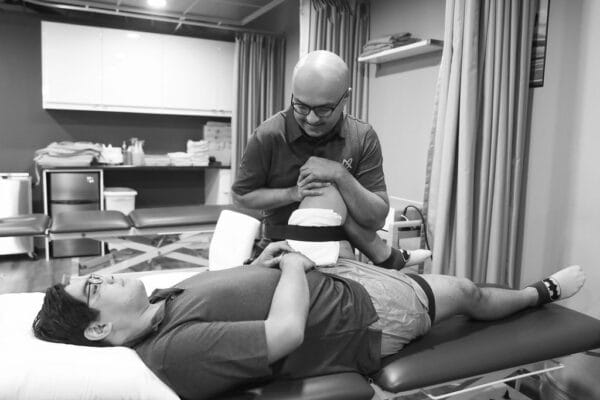
Using these checklists is a great way to decide which health professional is best for you.
- Do you have pain that is new, unexpected, or not yet diagnosed?
- Or you have a type of sports injury, or have you recently undergone orthopedic surgery?
- Do you require hands-on treatment for symptomatic relief such as acupuncture, manipulation or massage?
If you have answered yes to any of the above questions, then a Physical Therapist may be for you!
It’s well known that exercising for the proper duration and intensity may help improve the quality and length of life – it may decrease the incidence of obesity and chronic health conditions. Accredited Exercise Physiologists can work with such conditions through prescriptions and proper training.
Our Exercise Physiologists are university-qualified health professionals who provide safe, effective exercise programs, tailor-made to meet your health goals.
Do you need a physiologist and a physiotherapist and how can they help you?
Using these checklists is a great way to decide which health professional is best for you.
- Are you recovering from an injury, or have a prior injury that you do not want to worsen, however, wish to get fit and healthy?
- Do you have a chronic health condition (such as diabetes, hypertension, high cholesterol, asthma, obesity, osteoporosis, etc.) that exercise could assist with?
- If you have goals around losing weight or maintaining a healthy weight?
- Do you seek a specifically drafted and prescribed exercise program that will meet your health and wellness needs?
At the end of the day, there is a degree of overlap between both professions as they aid in treating many different conditions and aspects of health and well-being. The key takeaway is to choose the right professional based on your stage of recovery. If you are in the acute stages of rehabilitation, a physiotherapist is the ideal person to seek treatment from. However, if you are in the sub-acute, recovery, or chronic stage of rehabilitation, receiving treatment from an expert physiologist who can provide a specific and individually tailored exercise program is what you need.
At Physiotherapy Oakville, our team collaborates with both physiotherapists and physiologists to ensure you receive comprehensive care at every stage of your recovery. Scientific evidence supports the importance of tailored treatment plans in achieving optimal health outcomes. By joining Physiotherapy Oakville, you benefit from a multidisciplinary approach that addresses your unique needs, ensuring effective treatment and a smooth recovery process.
Click HERE to book an appointment with a physiotherapist at one of our eight locations.
- Physiotherapy Etobicoke – Triangle Physiotherapy Etobicoke
- Oakville Physiotherapy Clinic – Triangle Physiotherapy Oakville
- Physiotherapy North York – Triangle Physiotherapy North Yor
- Mississauga Physiotherapy Clinics – Triangle Physiotherapy Mississauga
- Downtown Physiotherapy Clinics – Triangle Physiotherapy King West
- Uptown Physiotherapy Clinics – Triangle Physiotherapy Lawrence Park
- Physiotherapy Clinic Downtown Toronto – Triangle Physiotherapy Queens Quay
- Physiotherapy Clinics Mississauga – Triangle Physiotherapy Erin Mills
“Understanding the differences between a physiologist and a physical therapist is crucial for choosing the right care for your needs. Triangle Physiotherapy offers expert services across the GTA, including Physiotherapy in Etobicoke, Oakville, North York, Toronto, Lawrence Park, Queens Quay, Erin Mills, Mississauga, and Liberty Village. Our skilled physiotherapists are here to provide personalized treatment plans tailored to your specific health goals.”
When it comes to patient care, it is important to understand the different severities of injuries. This classification is important as it helps the medical practitioners to address and prioritize the efforts. Here, we are going to talk about the difference between injury and trauma and help you understand how does physiotherapy help in the treatment of both.
Unfortunately, the injuries caused due to trauma are very severe and require need complex medical treatment and longer recovery time. Therefore, anyone who undergoes a traumatic injury must consult the experts for their condition and avail the best physiotherapy treatment to ensure maximum and fastest recovery.
What is an injury?
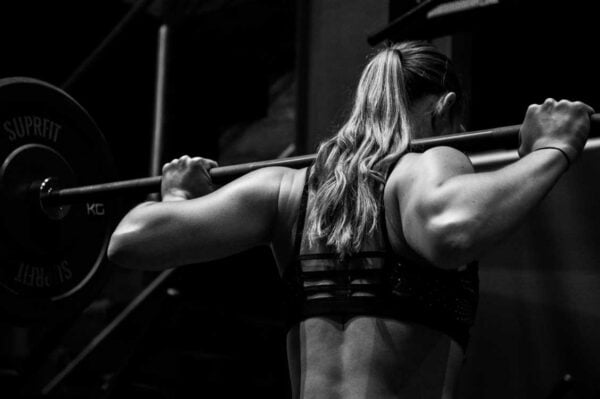
What Is An InjuryIn simple terms, any instance that causes harm to the body can be classified as an injury. Injuries can be divided into different ranges, depending upon the severity and impact on the body. Some injuries might require immediate medical attention while some can heal naturally with minimum or less care. Some examples of injuries are cuts, burns, scrapes, minor concussions, broken bones and sprains. What may look like a minor injury could require urgent and special medical care. Therefore, it is suggested to visit a trained and experienced physiotherapist or practitioner in case of an injury.
What is a trauma?
Trauma can be explained as a more serious, possibly life-threatening injury, requiring urgent medical attention. A trauma is a critical injury and therefore most hospitals have a trauma center to attend and treat sensitive and urgent cases like these. Some of the examples of the trauma includes road accidents, severe cuts, burns, blunt-force trauma, serious falls, multiple broken bones, head injury, major concussions or stab wounds. Though the minor cuts or wounds can be handled by an effective first-aid kit or stitches, serious trauma like burns, bleeding artery or head injury may require extensive surgery followed by rehabilitation for a proper recovery.
Physiotherapy and Injury
When it comes to the recovery stage, physiotherapy is extremely beneficial. Many people believe that the road to recovery in injury passes through physiotherapy and the recovery can never be complete without physiotherapy. If a person has suffered from an injury from a broken bone or a sprained limb, he will face major challenges in routine activities. Simple tasks like walking or driving can be become arduous. This is where physiotherapy comes into picture. Physiotherapy provides the direction to exercise and mobilize specific muscles and tissues so that the body heals from the injury.
If a person suffers from an injury – major or minor, it is suggested that he should consult with the doctor about the recovery plan that must include physiotherapy. It is important to note that even a minimal physiotherapy helps in regaining strength and functionality post the injury. Injury recovery is not possible with a focused and dedicated physiotherapy program. For cases involving broken bones or sprains, physiotherapy is very useful to stretch and comfort the affected area and expedite the healing. Preventive physiotherapy is also beneficial for elderly patients and people at risk of injury. It helps in ensuring and maintaining balance, strength, agility and a complete range of motion while preventing injuries.
Physiotherapy and Trauma
Trauma injuries usually require more extensive and immediate surgery to fix the damage. Traumatic cases have extensive long recovery process. Patients suffer mental and physical anguish in injuries involving surgery. Based on the extent and severity of the injury, the recovery process may be anywhere from a few days to several years. In some unfortunate cases, some patients are never able to recover despite optimal surgery.
The time immediately after the injury and the subsequent surgeries is the most crucial one for people who have suffered a big physical trauma. It is this period that plays one of the biggest deciding roles in the duration and pace of the recovery. Therefore, it is suggested to consult an experienced and trained medical practitioner for the injury. Based on the injury and medical history, the doctor/medical practitioner prepares a recovery plan which starts immediately and involves a comprehensive active recovery like physiotherapy. Physiotherapy can be a painful and difficult process, but helps in regaining strength and mobility post traumatic injuries. They are a part of the recovery process in complicated cases like brain injuries and physical trauma.
Physiotherapy in GTA
Physiotherapy and rehabilitation care services can come in various forms based on the severity of the injury and medical history of the patient. For example, someone suffering from Tennis Elbow or Stress Fracture may need Shockwave Therapy Treatment, while someone who gets a head injury might need Vestibular Rehabilitation to cure dizziness and provide stability and balance to the mind. It is important to know that every situation is unique in its own way and therefore needs a different recovery plan and timeline. That is why one should be patient and adhere to the recovery plan chartered by the physiotherapist to get optimal results. At Triangle Physiotherapy, we offer a host of services aimed to provide relief from the pain and ensure preventive care for overall strength and well-being. Some of our services include –
- Pelvic Floor Physiotherapy – To encourage patients to successfully treat pelvic issues
- Vestibular Rehabilitation – To improve balance and reduce problems related to dizziness
- Shockwave Therapy – To reduce pain and promote healing shock waves are delivered to the injured soft tissues
- Chiropody – To lower the pain in the lower limbs and feet and cure mobility issues and infections
- Chiropractic – To treat the muscles, joints, bones and nerves through a non-invasive and conservative approach
- Naturopathic Medicine – To treat the root cause rather than covering up the symptoms using non-pharmacological interventions
- Massage Therapy – To promote deep relaxation, release tension and provide optimal well-being by working on the superficial and deep tissues
- Custom Bracing – To increase joint stability, improve alignment and reduce excessive movements
- Acupuncture – To help the body heal naturally by activating trigger points to relive muscle tightness
- Fascial Stretch Therapy – To achieve optimal strength, flexibility, performance and pain relief using table-based assisted stretching exercises
At Triangle Physiotherapy, we our trained and experienced physiotherapists will work with you to provide a comprehensive recovery program based on your conditions and medical history. Our services are tailor-made to provide relief and assistance to any type of injury or trauma and we ensure that you get the best recovery following our program. Our patients are our topmost priority and all our efforts are directed at providing them care and relief.
Click HERE to book an appointment with a physiotherapist at one of our eight locations.
- Physiotherapy Etobicoke – Triangle Physiotherapy Etobicoke
- Oakville Physiotherapy Clinic – Triangle Physiotherapy Oakville
- Physiotherapy North York – Triangle Physiotherapy North York
- Mississauga Physiotherapy Clinics – Triangle Physiotherapy Mississauga
- Downtown Physiotherapy Clinics – Triangle Physiotherapy King West
- Uptown Physiotherapy Clinics – Triangle Physiotherapy Lawrence Park
- Physiotherapy Clinic Downtown Toronto – Triangle Physiotherapy Queens Quay
- Physiotherapy Clinics Mississauga – Triangle Physiotherapy Erin Mills
If you are dealing with an injury or trauma, seeking professional physiotherapy can help you recover safely and effectively. Whether you’re located in physiotherapy Etobicoke, Oakville, North York, Toronto, Lawrence Park, Queens Quay, Erin Mills, Mississauga, or Liberty Village, there are physiotherapy clinics available to provide specialized care and personalized treatment plans to support your recovery journey.
Spondylolisthesis is a condition that leads to back pain caused by the instability in the vertebrae. According to an article published in Spine, 6 to 11.5% of the adult population experiences this condition. People who are involved in football or gymnastics are at a higher risk. While we understand that it’s a painful condition to be in, we don’t want you to stop doing what you love and therefore, we suggest you to book an appointment with our expert Physiotherapists at any of our nine rehabilitation clinics across the GTA ( Physiotherapy Etobicoke, Physiotherapy North York, Physiotherapy Mississauga, Physiotherapy King West, Physiotherapy Lawrence Park, Physiotherapy Erin Mills, Physiotherapy Queen Quay, Physiotherapy Oakville, Liberty Village).
When it comes to spondylolisthesis, exercise plays a very important role in improving the condition. However, one must remember here that not all exercises are safe and can even further damage the spine. We are going to make you learn Spondylolisthesis exercises that must be avoided for an effective Spondylolisthesis treatment. Before we move to exercises to avoid in spondylolisthesis, we must first understand what is spondylolisthesis.
Spondylolisthesis – an overview
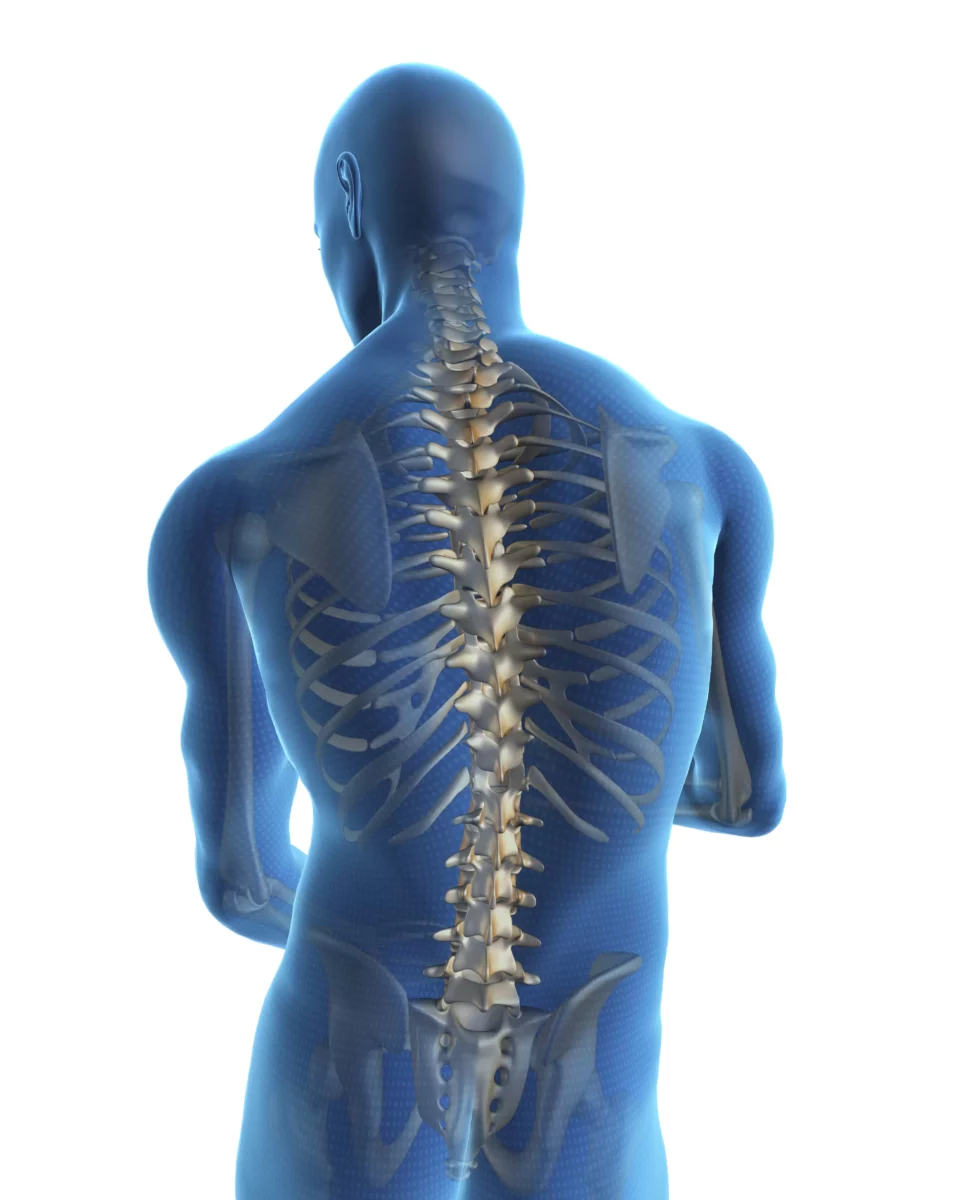
Is is usually caused by degeneration of the vertebrae or disc, due to trauma, injury or genetics. It makes a piece of the spinal bone, also known as vertebrae slips out of alignment and onto the bone below it. Spondylolisthesis usually occurs at the fifth lumbar vertebrae. As reported by the Cleveland Clinic, spondylolisthesis is one of the most common causes of back pain for teen athletes. Having said that, degenerative spondylolisthesis also results in low back pain in people older than 40 years.
Specific spondylolisthesis exercises are suggested to alleviate the pain and discomfort thereby improving the function and quality of life. Let’s now talk about the symptoms of spondylolisthesis.
Symptoms of Spondylolisthesis
Most of the spondylolisthesis symptoms include pain in the lower back that gets worse with standing and hyperextension. The pain may appear like a muscle strain. There are some other symptoms of spondylolisthesis that one must look out for –
• Tightness in hamstring
• Pain in posterior buttock
• Neurological changes including tingling down the legs and numbness
If you are experiencing any of these symptoms or have recently occurred an injury, consult our experienced physiotherapists at our rehabilitation clinics in different locations in GTA.
After a through examination, the physiotherapist suggests a personalised program to help reducing the pain and discomfort caused due to spondylolisthesis. Usually, the physiotherapists classify spondylolisthesis as low grade or high grade, depending on how much the vertebrae have slipped forward. Patients with lesser symptoms and low-grade slips respond well to conservative line of treatment, like exercise. However, patients who experience high grade slips witnessing numbness or tingling in the legs may require surgery.
Considering the potential risks, it is very important to know what exercises must be avoided in spondylolisthesis to prevent further damage or injury.
Spondylolisthesis Exercises to Avoid
If you are looking to rehabilitate a non-operative spondylolisthesis after consulting with the physiotherapist, expect it to take three to six months to heal, according to Sanford Orthopaedics Sports Medicine. It is suggested that the patient must take a break of at least three months from sports and athletics. The patients are also suggested to wear a brace for continuous stretch of time.
Other than rest and bracing, there are many other things to avoid in spondylolisthesis. We are now listing spondylolisthesis exercises to avoid to ensure proper and speedy recovery. These include lumbar extension movements that can take your spine past the neutral position. The lumbar extension movements may increase the pain and slow down the healing of the affected vertebrae.
Some other exercises to avoid in spondylolisthesis include –
- Prone press-ups (Push-up while lying on the stomach)
- Standing extensions
- Prone leg raises (Lifting legs while lying on the stomach)
- Back extension machine at the gym
It is also suggested that yoga asanas must also be avoided in spondylolisthesis. Yoga includes various back extension postures, like cobra and swan pose, which may not be safe to practice in spondylolisthesis.
There are some other exercises that must be avoided in spondylolisthesis. These includes weightlifting, exercises that need you to twist or bend, high impact activities that put a lot of stress on the healing back, like jumping rope or box jumps.
Now that we have learnt what exercises should be avoided for spondylolisthesis, we must also understand are the best to treat spondylolisthesis. Just like all the other injuries, physiotherapy is beneficial in the treatment of spondylolisthesis. Mostly, the rehabilitation focuses on increasing the core muscles without going past neutral along with hamstring stretches. One should expect up three to six months of rehabilitation before returning back to normalcy.
Spondylolisthesis Exercises to Do
We suggest the following spondylolisthesis exercises for a speedy and efficient recovery. We also suggest you to consult with your physiotherapist and not undertake any of these exercises without his approval.
- Pelvic tilt exercises – These exercises help in reducing the discomfort by stabilising the lower spine in a flexed position. Depending upon the pain and your preference, pelvic tilt exercises can be done in various positions.
- Crunches – Patients suffering from spondylolisthesis often face instability and pain caused by weak abdominal muscles. This can be strengthened with powerful crunch exercises. You must try to focus on proper form and moving slowly to engage the core muscles. Spondylolisthesis is a painful condition to be in and therefore we suggest not to force the body to move through full range of motion. This may increase the pain and slow down the recovery time.
- Hamstring stretch – Spinal instability often causes tension in the hamstrings to those suffering from spondylolisthesis. Hamstrings are the large muscles that run down the back of the thigh. Stretching hamstrings sitting on the ground can help to relieve tension and tightness caused due to spondylolisthesis. It also reduces the lower back pain.
- Multifidus activation – Multifidus muscles are the small but very important muscles lying next to the spine. These muscles help in bending and twisting movements thereby increasing the stability of the spinal joints. If suffering from spondylolisthesis, activating multifidi will ease the pain and provide the much-needed comfort.
- Double knee to chest – This spondylolisthesis exercise is suggested to decrease the instability and improve the strength. It works on the core muscles of the torso and is thus beneficial in spondylolisthesis.
Check with your physiotherapist before starting any exercise program for spondylolisthesis while recovering from this injury. You can aim for a gradual return to physical and sports activities, depending on the severity of the injury and how string your core is. Post healing core strengthening is also suggested to prevent future injuries.
Click HERE to book an appointment with a physiotherapist at one of our eight locations.
- Physiotherapy Etobicoke – Triangle Physiotherapy Etobicoke
- Oakville Physiotherapy Clinic – Triangle Physiotherapy Oakville
- Physiotherapy North York – Triangle Physiotherapy North York
- Mississauga Physiotherapy Clinics – Triangle Physiotherapy Mississauga
- Downtown Physiotherapy Clinics – Triangle Physiotherapy King West
- Uptown Physiotherapy Clinics – Triangle Physiotherapy Lawrence Park
- Physiotherapy Clinic Downtown Toronto – Triangle Physiotherapy Queens Quay
- Physiotherapy Clinics Mississauga – Triangle Physiotherapy Erin Mills
For those managing spondylolisthesis, seeking guidance from professional physiotherapists is essential. Whether you are looking for physiotherapy in Etobicoke, Oakville, North York, Toronto, Lawrence Park, Queens Quay, Erin Mills, Mississauga, or Liberty Village, there are specialized clinics available to help you avoid harmful exercises and support your recovery with personalized treatment plans.
Physiotherapy is the study of science of movements. It is a healthcare profession that includes different treatment modalities like massages, electrotherapy, heat therapy, exercises, patient awareness and advice for treating an ailment, deformity or injury.
When should I go to a Physiotherapist?
This is a very common yet important question. If you have suffered an injury or chronic pain that affects your daily chores, then you must consult a good physiotherapist. You can also avail the benefits of physiotherapy after surgery, like knee replacement or stroke.
At Physiotherapy Oakville, we have a team of dedicated and skilled physiotherapists who provide expert care tailored to your specific needs. Scientific research supports the role of physiotherapy in improving recovery outcomes and enhancing overall physical function post-surgery. By joining Physiotherapy Oakville, you gain access to personalized treatment plans and evidence-based practices that help you recover efficiently and resume your daily activities with confidence.
What will a Physiotherapist do?
Our experienced Physiotherapists provide case-based solution to your need. These are focused on preventive as well as rehabilitation. Some scenarios where a good Physiotherapist can help –
- Back and neck pain caused due to sprain in the skeleton or muscles
- Conditions like arthritis or after effects of amputation that results in discomfort in joints, muscles, knees and ligaments
- Lung disorders like asthma or bronchitis
- Disability resulting from heart problems
- Troubles occurred during childbirth like pelvic issue, bladder and bowel problems
- Parkinson’s disease and multiple sclerosis or loss of mobility due to trauma to the brain or spine
- Pain, swelling, fatigue, loss of muscle strength and stiffness during palliative care or cancer treatment
What should I expect from my Physiotherapist?
Our trained Physiotherapists at Triangle Physiotherapy provide specific and concerned answers to your core problems. This is what you can expect from your Physiotherapist-
- Your physiotherapist will understand your medical history
- Based on the medical history and symptoms, the physiotherapist will assess and diagnose your condition
- A treatment module will be set for you for your concern
- Specific exercises and assistive devices would be suggested to you based on your module
To understand what all things are done in Physiotherapy, let’s try to learn the various types of treatment modalities used in Physiotherapy.
- Manual Therapy – This technique is a very common one where the physiotherapists massage the affected joints to mobilise and manipulate using his hands. Our team of expert physiotherapists in Toronto are highly equipped and experienced in this therapy.
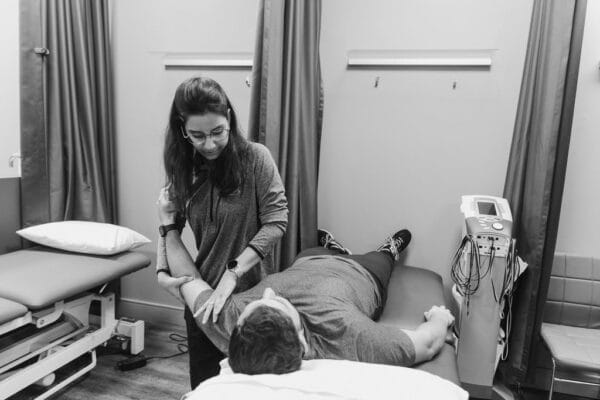
- Transcutaneous Electric Nerves Stimulation (TENS) Therapy – In this therapy, the physiotherapist uses a small device driven by a battery and place it on the skin surface of the patient. Low grade currents are sent through these electrodes to relive pain of the affected area.
- Magnetic Therapy – This therapy uses electromagnets of different sizes and types. These are used to limit the pain of the affected body part.
- Dry needling and acupuncture – In this therapy, the physiotherapist uses fine needles and insert them into specific body parts to alleviate the pain for a short time. You can consult with our physiotherapists at Etobicoke clinic for this specialized line of treatment.
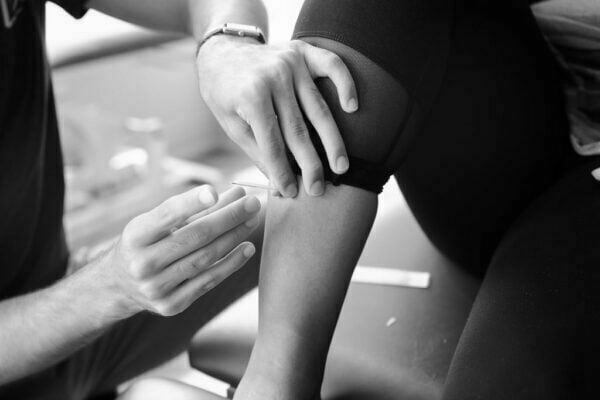
- Taping – This physiotherapy technique is highly popular as it promotes body’s inherent natural healing mechanism. Here, the physiotherapist uses a tape which lifts the skin away from the connecting tissue, thereby increasing the space and allowing the lymphatic fluid to move more functionally to ease the pain.
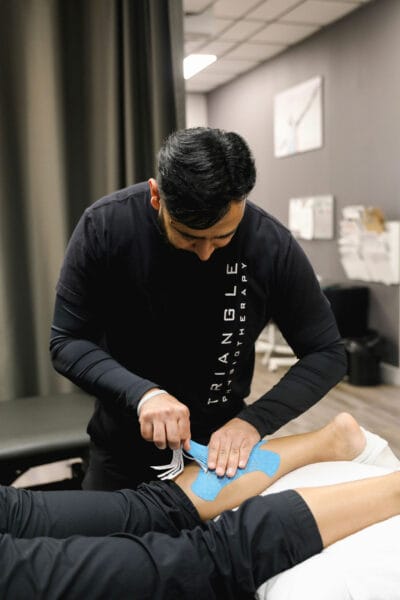
- Joint Mobilisation – This is a manual therapy technique where a physiotherapist mobilises the joint at different depths, speeds and amplitudes. It helps in restoring normal joint movement in the body. Our physiotherapists at Lawrence Park clinic are highly equipped and skilled in this technique.
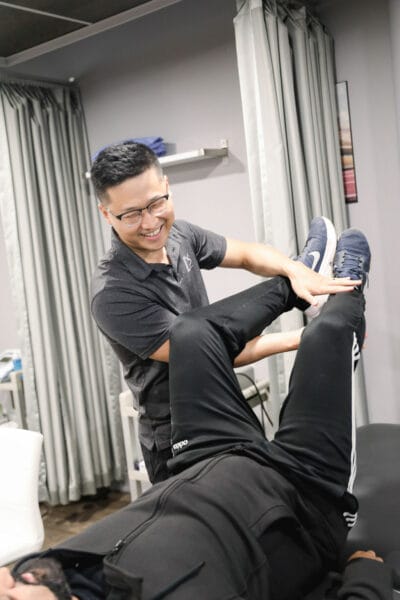
- Stretches and exercises – This is a fairly common module where the physiotherapist teaches different exercises and techniques for body stretching which helps in restoring the joint movements.
- Rehabilitation – This includes a broad range of corrective, preventive and stretching exercises to reduce the sprain or pain in the affected area.
- Strengthening Program – This is one of the most important modalities in physiotherapy where the physiotherapist conducts specific program to make the patient understand about his personal responsibility towards his health and physical conditioning. This program is very useful as it helps the patient in improving overall heath, strength, balance, coordination and flexibility.

- Diathermy – In this technique, electrically induced heat or high-frequency electromagnetic currents are used to relive the pain and cure the condition. Our physiotherapists at North York clinic are efficient and skilled in this technique. If you are facing pain or recovering from a surgery, you can consult us.
- Ultrasound and phonophoresis – A frequency range of 0.5 – 3 MHz is used in this therapeutic ultrasound. This technique induces a deep heat to the target area to treat muscle spasm, promote healing at cellular level and lower the inflammation. It also increases the metabolism and improve the flow of blood towards the damaged tissue. Phonophoresis uses ultrasonic waves for better absorption of drugs that are applied topically during the treatment. This is a very useful technique as it helps in reducing the pain by allowing maximum absorption of drugs like anti-inflammatory and analgesics.
- Range of Motion exercises (RoM) exercises – A good physiotherapist would diagnose the patient and recommend Range of Motion exercises to improve the mobility of joints and reduce the stiffness in the muscles. There are various types of RoM exercises, like Passive Range of Motion (PROM) exercises, Active Assistive Range of Motion (AAROM) exercises and Active Range of Motion (AROM) exercises.
- Soft tissue mobilization – This highly effective technique in physiotherapy helps in alleviating pain, reducing swelling and relaxing the tight muscles in the body.
To summarize, Physiotherapy is a special treatment to maintain, restore and make the most of a person’s function, mobility, strength and well-being. It helps through various techniques and aid in recovery as well as strengthen the body for w holistic living.
Now that we have established what all is done and expected in Physiotherapy, we would like to hear from you. Please write to us if you have any questions regarding Physiotherapy. You can also check our services and locations for any line of treatment.
Click HERE to book an appointment with a physiotherapist at one of our eight locations.
- Physiotherapy Etobicoke – Triangle Physiotherapy Etobicoke
- Oakville Physiotherapy Clinic – Triangle Physiotherapy Oakville
- Physiotherapy North York – Triangle Physiotherapy North York
- Mississauga Physiotherapy Clinics – Triangle Physiotherapy Mississauga
- Downtown Physiotherapy Clinics – Triangle Physiotherapy King West
- Uptown Physiotherapy Clinics – Triangle Physiotherapy Lawrence Park
- Physiotherapy Clinic Downtown Toronto – Triangle Physiotherapy Queens Quay
- Physiotherapy Clinics Mississauga – Triangle Physiotherapy Erin Mills
Physiotherapy encompasses a wide range of techniques, including manual therapy, exercise prescription, and patient education, to promote healing and recovery. For those seeking physiotherapy services, there are numerous clinics available in physiotherapy Etobicoke, Oakville, North York, Toronto, Lawrence Park, Queens Quay, Erin Mills, Mississauga, and Liberty Village. These locations offer expert care and customized treatment plans to help patients achieve optimal health and mobility.

